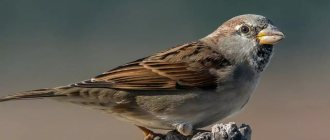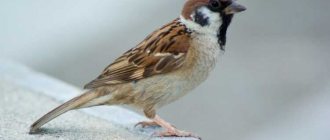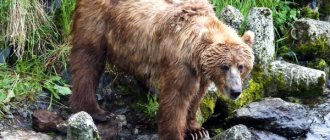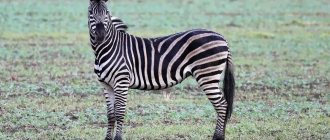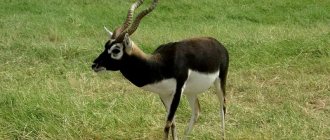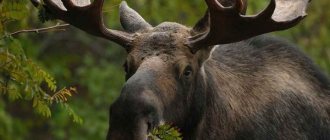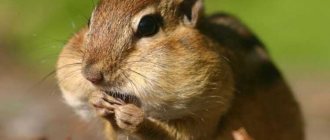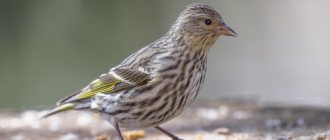A majestic animal strides steadily across hot savannas and steppes. The antelope is famous not only for its stunning appearance and grace, but also for its lightning-fast reaction and speed, which allows them to immediately hide at the first sign of danger. When mentioning these animals, every person will certainly imagine how a large African antelope with long horns stands warily under the rays of the hot sun. But not everyone realizes how different representatives of a large and confused group can be. This is due primarily to the fact that their classification is unstable and does not have a clear structure. Antelopes include all bovids that are not included in other genera, families and subfamilies. Currently, there are more than 100 species of these animals.
Where does the antelope live?
Antelopes have adapted well to a wide variety of climatic conditions. If you look at the habitat of these animals, you can say with confidence that they are literally scattered across the planet.
Many are accustomed to the fact that horned beauties are found only in the savannas of Africa. This misconception may have arisen due to the fact that the overwhelming number of species of the bovid group live on this continent. However, some species of antelope are found in the steppes of Central Asia, Europe (Caucasus, Alps), India, North and South America.
The antelope usually lives in places with a hot, dry climate, where all kinds of grasses grow well. Animals feel great in deserts, semi-deserts and steppes. An open area allows herbivores to notice a creeping predator in time and quickly escape to a safe distance. Among them are the famous antelopes from Africa: wildebeest, great kudu, nimble gazelles of Thompson and Speke, impalas. The steppe antelope, saiga, lives in the semi-deserts of Central Asia. The deserts of Arabia are home to the rare oryx.
Another group of graceful bovids chose the forests. The eland, which looks like a strange mixture of a bull and a goat, adapts well to both forests and mountains. Often living in dense thickets, bovids are somewhat reminiscent of deer. Nyala from Africa almost never leaves the dense forest. Tiny babies are hiding in the thickets: dik-dik and duiker.
The bravest animals have mastered the mountainous areas. Some African antelopes, such as sassas (or klipspringers), are considered the best jumpers in their group. With the smallest supporting area of their legs among artiodactyls, these babies are able to overcome chasms without problems and cheerfully jump along the steepest slopes. Caucasian and Alpine chamois mainly live on snowy mountain peaks, only descending into the forests in severe winter.
Some groups chose places near swamps and ponds. Antelope from Africa with the strange name “kob” are attached to permanent rivers and feed on vegetation growing on the banks and at the bottom. This graceful animal lives not far from the harsh Sahara. In open forests with a large number of reservoirs there lives a not at all large antelope - the redunka, or nagor.
Due to human activities, the habitats of some antelope species have significantly decreased. Pollution of water bodies, urban construction and agriculture are pushing artiodactyls out of their natural habitat.
What do antelopes look like?
About the horns
The name “antelope” itself is translated from Greek as “horned animal”. Indeed, each species of this large interesting group can boast of its own special crown.
If you look at the representatives of all families, you will notice that their horns are completely different. They differ not only in diameter, but also in length (from 2 cm to 1.5 m), color and shape. This bone formation, unlike the antlers of deer and pronghorn, is firmly connected to the skull and does not branch.
The most unusual and beautiful crown is considered to be the crown of the vintohorns. It has an interesting, spiral shape. Unfortunately, it was precisely because of this that the great kudu, an African antelope with long horns (more than a meter), strongly twisted in a corkscrew, found itself on the verge of extinction. The species is now under protection.
The great kudu from Africa has the longest horns in the world, usually reaching a length of one to one and a half meters (the record is 1.8 m).
Waterbucks living near permanent bodies of water have lyre-shaped (double-curved) horns. Their crown is usually large (from 50 to 90 cm in different species). Only the secretive common rednecks have straight (slightly curved to the sides) and small (slightly more than 20 cm) horns.
Peleia, or roe deer, is the only representative of the roe deer antelope genus. These small, graceful animals from Africa, weighing about 20 kg, have short, straight, but sharp and durable horns, allowing them to defend themselves from predators.
Representatives of the saber-horned subfamily, which in appearance resemble strange horses, are endowed with very long horns. The shape and thickness of different genera are different: addaxes have wide and twisted horns, horse antelopes have horns strongly curled back in the form of a semicircle, oryxes have thin, straight or slightly curved horns of very long length.
Cow antelopes are one of the largest representatives of their group. The bubala received its second name because of its elongated skull, slightly reminiscent of a bull’s head. One of the characteristics of these large artiodactyls from Africa is that both males and females have short, curved horns.
Gazelles are miniature owners of a straight or slightly curved crown. This antelope from the Asian steppes and Africa is very fast, and its thin, light horns do not interfere with its running.
Impalas boast some of the most beautiful head decorations. This African antelope with long horns (about a meter) curved in a wedge proudly wears a “V”-shaped crown.
But baby duikers are considered the most modest. Their straight horns do not exceed 10 cm in length.
About physique
All antelopes are very strong and hardy animals. However, the structure and texture of their body is also different, depending on their habitat.
Thus, the wildebeest from hot Africa has slender long legs, powerful enough to cover long distances. The body is large with a small hump behind the back. The powerful neck is covered with a kind of “mane”. And the head resembles a cow's. It seems that the wildebeest was assembled from parts of different animals.
Gazelles are very thin and graceful. These artiodactyls have a long flexible neck, which allows them to quickly look around and get leaves from trees. Due to their rather small size, gazelles become prey for many predators. The beauties need to reach the highest possible speed in order to survive. Thin but strong legs allow gazelles to jump high, accelerating and maneuvering.
The saiga antelope has an unusual adaptation. In the conditions of the dusty steppe, his unusual nose hanging down on his lower lip becomes simply necessary. Inside the proboscis, the cavities are covered with mucous glands that trap particles of sand and other debris.
And the giraffe gazelle from Africa also has an unusual appearance, completely consistent with its name. The long neck of the animal allows it to easily, standing on two legs, eat leaves of trees where most herbivores cannot reach them.
Springbok
Also known as leaping deer because they "jump" in the air, springboks are the only species of the genus Antidorcas and members of the family Bovidae. They are medium-sized antelopes most commonly found in the southern and southwestern parts of the African continent. They have keen eyesight, are extremely sociable, and are the symbol of the South African rugby team.
What do antelopes eat?
Antelopes live in quite extreme places: in snowy mountains, dry steppes and hot savannas, impenetrable forests. In fact, the diet of animals differs in different climate zones. What an antelope usually eats is determined even by the terrain (mountains, swamps, forests, plains). So, the diet of different representatives of this group may include:
- grass;
- leaves of trees and shrubs;
- aquatic and coastal vegetation;
- fresh branches;
- young shoots;
- flowers;
- fruits;
- moss;
- lichen;
- roots.
Antelopes are ruminants, which allows them to digest even the toughest grass and leaves. Cellulose contained in some parts of plants is not digestible by the stomachs of many herbivores. Bovids have adapted to process this substance by chewing their food twice.
It is said that many antelopes are able to find food almost anywhere. A keen sense of smell and natural ingenuity will always find a solution to a difficult situation. Therefore, what bovids eat may change at different times of the year.
Armed and very dangerous
In the wild, only those who are able to adapt better survive. Antelopes are constantly in danger of being eaten by predators. But these seemingly harmless animals also have their own trump cards up their sleeves.
The gazelle's main weapon is its graceful but strong legs. They save her from being chased by predators. Bovids run very quickly, successfully maneuver and jump, thereby confusing the attacker. In addition, when finding themselves in a hopeless situation (for example, protecting a cub), artiodactyls begin to kick their hooves.
The most noticeable weapon of these animals is their horns. And the graceful artiodactyls use their “decoration” not only for games and mating battles, but also for defense. As a rule, representatives of both sexes of the bovid family have formidable bone weapons. For example, the oryx, an African antelope with long horns, can use a kind of “saber” to fight off its enemies, inflicting severe deep wounds.
Forewarned is forearmed. In the wild, this phrase is almost the most important law of survival. The sooner the herbivore notices the predator, the greater the chance of escape. The antelope is a real spy animal. Her large ears, widely spaced to the sides, like radars, intensely listen to all the rustling of the grass. The eyes, also located on the sides, allow antelopes to see the approach of a predator. These animals also have a highly developed sense of smell.
Antelopes, like any herbivores, have stereoscopic vision. Their eyes are located on both sides of the head, which provides almost all-round vision. These herbivores, unlike predators, have excellent color vision (which allows them to determine the edibility of vegetation). Their eyes focus on stationary objects and are almost unable to see anything in the absence of light.
Sneaking up on one antelope unnoticed is a very difficult task. These animals are almost never left alone. They live in peculiar herd families, which allows them to observe almost the entire area in the area. If one individual from the herd notices a predator, it will immediately notify everyone else with a special signal.
Bulls
(Bovinae). In 1992, during a survey of the Vu Quang Nature Reserve in north-central Vietnam, three pairs of straight long horns of an unknown species were discovered in hunters' houses. According to the owners, they belonged to an ungulate called sao-lo, which means “spindlehorn.” Soon other hunting trophies (skulls, teeth and skins) were discovered. The study of over 20 such specimens led to the conclusion that they all belong to a previously undescribed species called Pseudoryx nghetinhensis
. The generic name indicates similarity with oryx, and the specific name indicates this area of Vietnam, formerly called Nget Tinh Province. It was further established that the number of this antelope does not exceed 200 animals. The study of skulls, teeth and skins made it possible to establish that its height at the withers is 80–90 cm, body length 1.5–2 m, tail 13 cm, and weight approximately 100 kg; Both sexes have horns ranging from 32 to 52 cm in length. The coloring is striking: the upper body is bright brown with bright white markings on the muzzle, chin and throat, a whitish or yellowish stripe above and below each eye, a blackish “strap” along the spine and a whitish stripe on the rump separating the brown back from the blackish legs with white "socks". Sao-lo lives in vast virgin forests and usually lives in groups of 2-3 individuals. The Vietnamese government took the species under protection and expanded the area of the Vu Quang Nature Reserve from 16,000 to 60,000 hectares. Based on preliminary DNA research, the Sao-lo has been placed in the subfamily Bovinae and is sometimes called the "Vu Quang bull."
Lifestyle
Antelopes most often lead a diurnal lifestyle. In the light of the sun, it is much easier for these animals to notice a predator and find food. Bovids are forced to lead a nomadic lifestyle, constantly moving across endless pastures, forests or mountains.
Antelopes often live in large herd families. The hierarchy and structure of associations differs significantly among different species. Thus, among pronghorns from Africa, the leader of the herd (there is no clear hierarchy or family ties) is the female, who directs her relatives to a new pasture or body of water. Impalas have unique harems. The leader male guards a group of several females with cubs.
Antelopes sleep very little. During the day, they occasionally doze, standing on their feet or lying down with their legs crossed. In case of danger, the animal instantly wakes up and begins to flee.
Many African antelopes with long horns gather in herds. It's much safer this way. Some animals guard the rest, then they are replaced.
Nyala
Of the bull subfamily, the lowland nyala stands out especially. They have those very rare horns that are often hunted by poachers. It is the males that have helical horns, but the females are deprived of them. This species is common in Mozambique and Zimbabwe, but can also be found in South Africa.
The nyala mountain antelope also belongs to the genus of forest antelopes from the bull subfamily. Animals live in the mountains of Ethiopia. Females, like females of related antelopes, do not have horns.
Antelope breeding
Many antelopes have a well-defined breeding season. Mating games begin in February-April, towards the end of the rainy season. Each species expects its babies to appear at the beginning of the wet season, when there is plenty of food.
Antelope pregnancy lasts differently. The larger the size of the individual in the species, the longer the cub is born. For example, the eland, an African antelope with long horns, bears babies for 9 months, and the tiny dik-dik for 6 months.
Mating games are also different. Some species engage in duels. During the duel, the winner is determined on the horns and receives a harem. Other male antelopes gather a group of females, protecting them from strangers.
Babies are born quite strong and literally within a few minutes they get to their feet. Most cubs begin to immediately follow their mother. In some species of bovids, babies hide in special shelters.
Social structure
Photo: milton lungu
Antelope gather in herds, with herd sizes ranging from small - from three to ten animals - to large groups. Specific habitat, food availability, and time of year can affect herd size. Some antelopes, for example, different species of duikers, prefer solitude or live in pairs.
Antelope species
If you look at all the antelopes, it’s easy to see how different they are. And this is no coincidence! This motley group of animals includes several families. Sometimes they include some species of bulls and goats. Antelope species are shown by a list of subfamilies:
- real antelopes;
- saberhorns (saber-horned antelopes);
- roe deer (roe antelope);
- cow antelopes (harbers);
- dwarf antelopes;
- waterbucks;
- pronghorns;
- impalas;
- some bulls and goats;
- crested antelopes (duikers).
You will learn about extinct species and genera a little later. Next, let's look at the most interesting representatives of this group.
wildebeest
The wildebeest is one of the most famous herbivores from Africa. They got their unusual and even slightly menacing name from the mooing sounds they make.
There are currently two subspecies of wildebeest: white-tailed (or black) and blue. The first one is considered very rare. White-tailed wildebeest live only in southern Africa (Namibia), and blue ones live a little further north, in Kenya. It is easy to distinguish these two species from each other. The white wildebeest has horns directed slightly forward, the hair on the mane and tail is white, while the blue wildebeest has horns set apart and the hair is black.
The unusual and slightly strange appearance of the animal seemed to influence its character. The wildebeest has an extremely unstable mood. An animal grazing peacefully can suddenly jump up, start butting the air and rush around the area angrily. If this is not enough for the wildebeest, it will attack the first resident of Africa (even an elephant).
One of the most fascinating phenomena of the animal world is the migration of bovids. Each large antelope joins the general migration in search of pastures. The timing of migration is not clearly established. Each year, animals can “advance the schedule.”
Wildebeest are animals with highly developed social contact. Herbivores will always help out a herd member in trouble.
Canna
The eland antelope is the largest animal in the bovid family. Its body length is 2-3 meters, and its weight is from 500 to 1000 kg! Despite its serious size, this African antelope with long horns looks very slender.
Cannas are reddish-ocher from birth. However, their fur darkens over the years, acquiring a gray-blue tint.
Cannas live in northern Africa, where they thrive on the plains. Animals feed on fruits, leaves and grass. Despite their external gracefulness, these antelopes are quite slow (although, if necessary, they can reach speeds of up to 70 km/h). Elands are known as excellent jumpers: from a standing position they can jump over a distance of more than three meters.
This African antelope with long horns lends itself well to domestication. Cannes are grown for their milk, which is several times fattier and healthier than cow's milk, and meat.
These animals are quite peaceful and try not to displace smaller herbivores from their territory. In addition, they try their best to avoid unnecessary fights. Males communicate before meeting, sending signals to each other about their age, size, and size of horns. Opponents evaluate their strength, and the weaker leaves the territory.
Royal antelope
The royal, or dwarf, antelope is considered the smallest in its group. Her height does not exceed 30 cm and her weight is no more than 4 kg.
The legs of cute babies from Africa are thin, but very strong. When in danger, the animal can jump 2.5 meters high. The body is small, oval with a characteristic light brown skin. These are very peaceful animals, so fights between males occur infrequently. This is why the black horns of representatives of the species are small (3-4 centimeters).
These little ones live in the tropical forests of West Africa. They lead an active nocturnal lifestyle, hiding in the morning and during the day. Unfortunately, their small size makes the species difficult to study. The list of questions that scientists have accumulated is only growing every year. It is known that representatives of the species live separately.
It is believed that the royal antelope from Africa acquired its miniature size in order to reach what it feeds on - leaves from the lowest tiers. The fact is that each herbivore is adapted to a specific type of vegetation.
Saiga antelope
Sagaks (or margaches) live in the steppe expanses of Asia. This slightly clumsy antelope, all species of which were until some time in danger of extinction, is easily recognizable. A large nose hanging down to the lower lip is a kind of adaptation to harsh living conditions. The proboscis allows you to filter air that is heavily clogged with dust.
The saiga's nose is able to regulate the temperature and humidity of incoming oxygen. A large number of blood vessels in the proboscis heat or cool the air, and the mucous membranes soften too dry air. The nose is also capable of emitting various sounds and signals.
These medium-sized antelopes weigh up to 80 kg. Their body is long, and their legs are short and strong. Saigas gather in large herds: in the summer they migrate together, and in the winter they keep warm.
On average, each female gives birth to two cubs (less often three or one). For several days, the mother hides her baby in a shelter where the baby saiga lies motionless. Only after this time do margachi as a large family begin to graze.
The steppes of Asia have very hot, dry summers and cold winters with strong winds. This is why the fur coat of saigas changes seasonally: thin in summer, and dense with undercoat in winter.
Gerenuk
The gerenuk, or giraffe gazelle, has a very interesting appearance. The animal's name describes her quite accurately. The long, very thin neck and legs allow the gerenuk to reach leaves on the highest branches.
The height of the giraffe gazelle (at the withers) is 95 cm with a very small weight of 30-50 kg. Small black horns are found only on males. The body of the animal is slender and reddish in color.
Gerenuks live in semi-desert treeless areas. They never form groups. Males jealously defend their territory.
Oryx
Oryx, an African antelope with long horns, is known throughout the world as a famous swordsman. Their slightly curved crown can reach a length of about 90 cm. These animals received their second name - oryx - for their large physique, reminiscent of a bull, and a beautiful striped pattern on the muzzle, like mountain chamois.
Oryxes live in dry deserts and semi-deserts. They are protected from the heat of the sun by a thick, light skin that reflects the rays. In addition, this African antelope with long horns can live without water for several weeks!
Oryx are able to sense moisture several kilometers away. They rarely manage to find bodies of water. They receive all the necessary moisture from sparse vegetation.
Oryx live in small herds, led by a male leader. The association is characterized by a strict hierarchy. The leader guards his ladies with their babies, who walk in the herd right behind him. At the end come the subordinate males.
Oryx are real long-livers among antelopes. In natural conditions, they live on average 18 years!
This African antelope with long horns uses its saber-like weapon in the fight for the female. Duels take place according to special rules. The males stand shoulder to shoulder with each other and begin to fence with their horns. Often this is where it all ends. Oryxes do not allow bloodshed.
Canna
First of all, antelopes are mammals. Moreover, they can feed milk not only to their cubs. An example and clear proof of this is the eland (the genus, species and name of the animal are the same). Their milk is recognized as miraculously healing and highly bactericidal.
It tastes sweet and has a fat content of about 11%. One canna can produce up to 600 liters of milk per year. Such a discovery was made recently in the Askania-Nova nature reserve, where the first domesticated herd of such antelopes in the history of mankind is kept.
Here we immediately note that the historical homeland of eland, of course, is not Ukraine, where the mentioned reserve is located in the Kherson region. Such animals were brought there from Africa, where from time immemorial they lived, being wild. And they grazed in foothill meadows and shrouds in the southern, as well as central and eastern regions of the continent.
When describing the appearance of an eland, one can really get a little confused, since its body seems to be constructed from parts of many animals. The head looks like a goat's. But the horns are not curved, they are straighter, longer and seem to be twisted in a helical manner. The neck is thicker and has a bizarre shape.
It is not clear what to compare the torso and the limbs attached to it with. There's a bit of a horse there. No, it’s still a zebra, only the coloring is not striped, but sandy-reddish on top and whitish below. Some things are taken from the donkey, for example, short legs.
And also from a cow, and not only in the structure of the body, in particular, the tail is distantly reminiscent of a bull, but a little shorter and thicker with a tassel at the end. By the way, it also looks a little like a lion. In general, it is not surprising that medieval artists became so confused.
Of all the antelopes, this species is considered the largest. The size at the withers of individuals is about one and a half meters, the vertical length reaches three meters, and the weight is up to 700 kg. But in the Cannes genus there are even more impressive varieties.
Extinct antelopes
The diversity of antelopes is marred by serious losses. Already fourteen genera of these beautiful animals are completely extinct. Among them are both the ancient inhabitants of our planet and those who lived more recently. Let's take a look at some antelopes lost forever to the world.
Tragocerus
Tragocerus appeared on our planet about 30 million years ago. These ancient animals lived in the savannas and forest-steppes of Africa. Their gregarious lifestyle is evidenced by the remains found in groups.
These were small (no more than 90 cm in height) antelopes quickly spread across the continent, adapting to a wide variety of vegetation. Goats became extinct about 5 million years ago due to a sharp drying of the climate, and then cooling.
Northern saiga
It’s not for nothing that saigas are called living fossils. These animals have maintained their unchanged appearance for more than 250 thousand years! Traditionally, saigas are considered a steppe Asian antelope, but in 1876, geologist Ivan Dementievich Chersky found the skull of a margacha in cold Yakutia.
It turns out that these antelopes lived at the same time as mammoths. It was under conditions of extremely low temperatures and lack of food that the famous margacha nose was formed.
Blue antelope
The blue antelope became the first large herbivore in Africa to become extinct due to human causes. Their habitat was very small (4 thousand square kilometers) and was located in the very south of the continent. Although, judging by the rock paintings, in ancient times it was much larger.
The animal was discovered by Europeans in the 18th century. The antelope got its name because of the slightly bluish tint of its skin, which “shone through” the skin. The animal's horns were medium in size, in the shape of a curved saber. In appearance, the blue antelope was a typical representative of horse antelopes, only somewhat smaller and more graceful.
Rare animals began to be mercilessly killed for the sake of beautiful skin and just for fun. The meat was fed to dogs, as it was completely tasteless. The blue antelope constantly needed water, so it was vulnerable and could not escape.
The last representative of the species died in 1799 (or 1800). For local peoples, this loss was even more painful: the animal was considered a protector from dark forces and evil spirits.
Now only four stuffed blue antelopes and several bone fragments have survived.
Red gazelle
Red gazelles lived in the sediment-rich Atlas Mountains of northern Africa. Unfortunately, almost nothing is known about these animals. Three stuffed animals have survived, which were purchased at the Algerian market at the end of the 19th century. The last representative of the species was killed in 1894 while hunting. The red gazelle was officially recognized as extinct only a century later.
wildebeest
Subfamily of hares. There are two types of antelope:
- blue;
- white-tailed (common). Both species of these ungulates live in Africa. There are not many differences between them, except for the color of their coat and their numbers. One of the least numerous is the last species. These animals are very unpredictable, you should be careful with them. They are characterized by nomadism, the timing of which may vary each time.
Enemies of antelopes in nature
In the wild, antelopes always have enough offenders. These graceful animals become a desirable meal for many predators. Most often, cubs, old, sick and young individuals who cannot fully defend themselves and run away die.
In African savannas, bovids are hunted by large predators. Lions, hyenas, leopards, hyena dogs, and cheetahs often attack antelopes helpless in the dark. In addition, many herbivores die in the teeth of crocodiles when crossing rivers. And miniature artiodactyls, for example, dik-diks, are periodically attacked by large birds of prey (falcons, vultures, eagles) and smaller carnivores (foxes, jackals).
Chamois living in high mountains also hide from their enemies. High gorges are a good refuge, but when animals descend lower, danger awaits them. Wolves, golden eagles, foxes, leopards, lynxes and eagles tirelessly attack the agile chamois.
And the forest inhabitants have more than enough enemies. Wolves, jaguars, tigers, bears, wolverines are waiting for them in the thickets, preparing to attack. The cubs are in danger because they cannot yet detect the approach of a predator.
In the dry steppes, antelopes are hunted by corsac foxes, caracals, wolves, peregrine falcons, eagles and kites. They attack old and young saigas, which they take away from the herd.
The main enemy of gazelles is man. People, violating the laws of nature, kill strong and healthy animals without any need for food. It is man who is to blame for the disappearance of several species of beautiful bovids and bringing others to a critical state.
Now they are trying to “rehabilitate” endangered artiodactyls in national parks and zoos. Thus, the Saharan oryx population, which had been restored over several decades, was recently returned to nature.
Save Status
Approximately 25 species of antelope are listed as endangered. Many antelope species are hunted for their horns, meat, and skin, although their suitability for these purposes varies greatly. As a result, one species of antelope that is hunted in one country may be protected in another. Some species, such as the saiga antelope, are poached for their horns for use in Asian folk medicine.
Very few antelope species are bred on a small scale. There have been attempts to domesticate smaller species, but they have not been successful, partly because they are extremely difficult to domesticate and are very good at jumping fences. Due to the large number of antelope species and their wide variety of lifestyles and needs, only people with specialized knowledge should care for and attempt to tame them.

